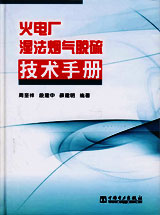
主要责任者: 周至祥,段建中,薛建明
责任方式: 编著
出版者: 中国电力出版社
出版地: 北京
字数: 1124 千字
页码: 2-699
开本: 16
中图分类号: X773.013-62
装帧: 精
语种:中
定价:78.00
出版时间:2006-06
丛书多卷书否:否
书目简介:本册工具书共收录328条词条。
被引频次:513
| 词条 | 火电厂湿法烟气脱硫技术手册 |
| 类别 | 中文百科知识 |
| 释义 |  主要责任者: 周至祥,段建中,薛建明 责任方式: 编著 出版者: 中国电力出版社 出版地: 北京 字数: 1124 千字 页码: 2-699 开本: 16 中图分类号: X773.013-62 装帧: 精 语种:中 定价:78.00 出版时间:2006-06 丛书多卷书否:否 书目简介:本册工具书共收录328条词条。 被引频次:513 |
| 随便看 |
开放百科全书收录579518条英语、德语、日语等多语种百科知识,基本涵盖了大多数领域的百科知识,是一部内容自由、开放的电子版国际百科全书。